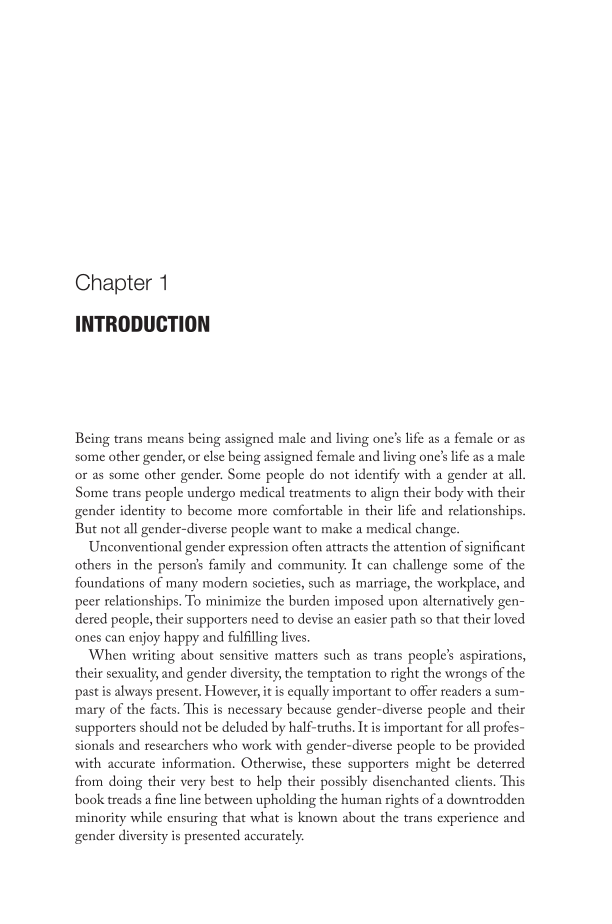Being trans means being assigned male and living one’s life as a female or as some other gender, or else being assigned female and living one’s life as a male or as some other gender. Some people do not identify with a gender at all. Some trans people undergo medical treatments to align their body with their gender identity to become more comfortable in their life and relationships. But not all gender-diverse people want to make a medical change. Unconventional gender expression often attracts the attention of significant others in the person’s family and community. It can challenge some of the foundations of many modern societies, such as marriage, the workplace, and peer relationships. To minimize the burden imposed upon alternatively gen- dered people, their supporters need to devise an easier path so that their loved ones can enjoy happy and fulfilling lives. When writing about sensitive matters such as trans people’s aspirations, their sexuality, and gender diversity, the temptation to right the wrongs of the past is always present. However, it is equally important to offer readers a sum- mary of the facts. This is necessary because gender-diverse people and their supporters should not be deluded by half-truths. It is important for all profes- sionals and researchers who work with gender-diverse people to be provided with accurate information. Otherwise, these supporters might be deterred from doing their very best to help their possibly disenchanted clients. This book treads a fine line between upholding the human rights of a downtrodden minority while ensuring that what is known about the trans experience and gender diversity is presented accurately. Chapter 1 INTRODUCTION
Document Details My Account Print multiple pages
Print
You have printed 0 times in the last 24 hours.
Your print count will reset on at .
You may print 0 more time(s) before then.
You may print a maximum of 0 pages at a time.
































































































































































































































































































